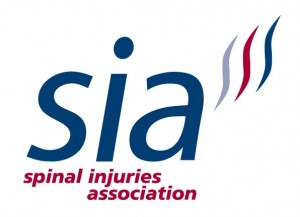Last week I was invited by the Spinal Injuries Association to present at their Case Managers Day event. Held at their head offices in Milton Keynes (capital of the roundabout universe FYI) they had a range of speakers on the day talking to 50 delegates about “what case managers need to know”, who are typically assigned to spinal cord injured patients whilst they are in hospital as they transition back to home life. The course was designed to cover a range of issues and essential information, including presentations by spinal cord injured people, a leading spinal consultant and a human rights lawyer.
 Following an introduction by Jonathan Fogerty, Chair of the SIA, Peter Carr (a fellow Stoke Mandeville escapee to use his words!) gave a powerful overview of the personal effect that his injury had on his life and how he came to be involved with case management. Spinal Injuries Consultant Martin McClelland, then had the unenviable task of trying to summarise the physical effects of Spinal Cord Injury in no more than 45 minutes (and without sending everyone to sleep!). I wasn’t quite timing it but I think he made it through in about 50 minutes, which I didn’t mind at all as it gave me more time to wake up mentally before I gave my presentation! It’s fair to say that I learned one or two bits during his talk too, I obviously must have had other things on my mind when I was in hospital…
Following an introduction by Jonathan Fogerty, Chair of the SIA, Peter Carr (a fellow Stoke Mandeville escapee to use his words!) gave a powerful overview of the personal effect that his injury had on his life and how he came to be involved with case management. Spinal Injuries Consultant Martin McClelland, then had the unenviable task of trying to summarise the physical effects of Spinal Cord Injury in no more than 45 minutes (and without sending everyone to sleep!). I wasn’t quite timing it but I think he made it through in about 50 minutes, which I didn’t mind at all as it gave me more time to wake up mentally before I gave my presentation! It’s fair to say that I learned one or two bits during his talk too, I obviously must have had other things on my mind when I was in hospital…
After that marathon, a combination of myself, Ejaz Nabi (Care Agencies) and Brian O’Shea (Continuing Care Funding) covered a range of care packages options and available funding. It’s fair to say that all 3 presentations dovetailed very well. If you want to see more details you can download my talk from my presentations page. If I get copies of the others I’ll link to them here too.
We concluded across all three and in the open forum that no matter what care package you put together, it needs to be focused on the individual and their needs. I must apologise to Ejaz too, after I slated the agency option. In my presentation I briefly mentioned the experience I had after leaving hospital of having 60 carers in 2 years. I’m well aware that things have changed significantly since that time and that many agencies do a splendid job.
As Brian hinted at during his talk, there is more funding from multiple sources starting to happen now, particularly where individuals have complex needs that are both healthcare and social based. In fact of the four somewhat crude options I gave, the best option may well be secret hidden option number 5: a combination of 2 or more. Imposing only one solution is effectively like putting all of your eggs in one basket. With my care I have agency as a backup if needed. My parents even look after me sometimes, but at a time when we choose rather than out of necessity.
That is the secret to the best care package, having a backup or Plan B so that everything doesn’t fall out of place or on one person, family members, agency or otherwise when things go wrong or someone has their “worst day”. That flexibility and adaptability is tricky to balance, particularly in the current economic climate where funding is so limited. If a care package can cover needs when these bad days do come along (and it’s not to say that these would be every day) then it will ultimately be a more cost effective solution that will allow a far greater number of individuals to live as independently and creatively as they choose.
I very much enjoyed the day and hope that I can work with the SIA again in the future.
Rm

